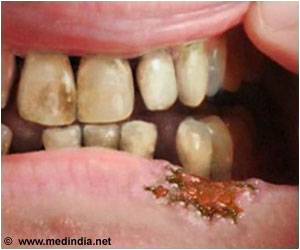Raman spectroscopy can successfully distinguish between healthy tissue, oral cancer lesions, and non-cancerous lesions.

‘Raman spectroscopy helps distinguish between healthy tissue, oral cancer lesions, and non-cancerous lesions.’





"Raman spectroscopy is not only label-free and non-invasive, but it can potentially be used in ambient light conditions," says research team leader Levi Matthies from University Medical Center Hamburg-Eppendorf in Germany. "This makes it promising for use as a potential screening tool in the dentist's office." In The Optical Society (OSA) journal Biomedical Optics Express, a multi-institutional team of researchers report, for the first time, that a type of Raman spectroscopy known as shifted-excited Raman difference spectroscopy (SERDS) can successfully distinguish between healthy tissue, OSCC and non-cancerous lesions.
According to current guidelines, clinically apparent, conspicuous mucosal lesions of the oral cavity require initial conservative treatment and monitoring. If they persist, a diagnosis is established by surgical biopsy. "Our study shows the potential of Raman spectroscopy for revealing whether a lesion is cancerous in real time," said Matthies. "Although it won't replace biopsies any time soon, the technique could help reduce the lapse of valuable time as well as the number of invasive procedures."
Light-based cancer detection
Raman spectroscopy uses light to reveal information about the molecular composition of biological tissue. A variant of this analysis approach known as SERDS is useful for analyzing samples such as tissue that exhibit strong background fluorescence, which can obscure Raman signals from molecules of interest.
Advertisement
After processing the raw spectroscopy data, the researchers trained and tested computational models designed to classify the tissue. The approach was able to distinguish OSCC from non-malignant lesions with an accuracy of 88.4%, and OSCC from healthy tissue with an accuracy of 89.8%. Most of the spectral features used to distinguish malignant and non-malignant lesions originated from protein and nucleic acid molecules.
Advertisement
The researchers say that with further development their approach could be expanded to classify precancerous conditions, grade the severity of dysplastic tissue aberration and distinguish various oral lesion subtypes. They also are working to make their system more portable and increase the speed of the analysis to support real-time diagnosis.
Source-Eurekalert















